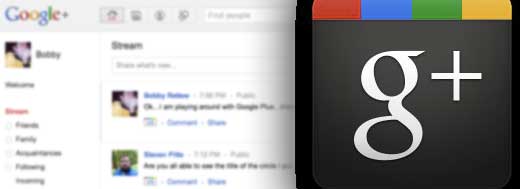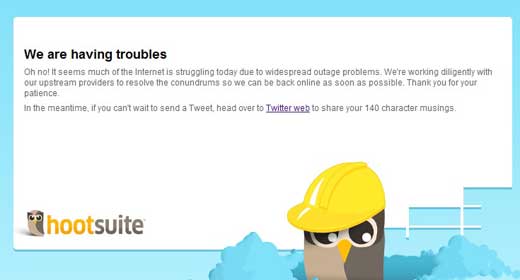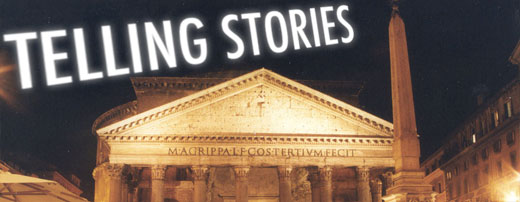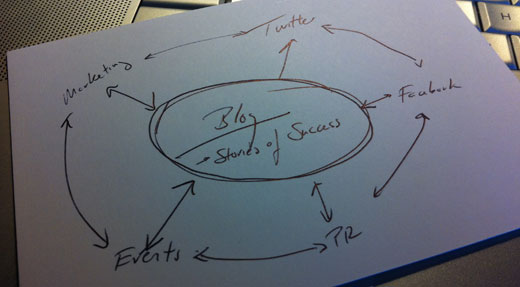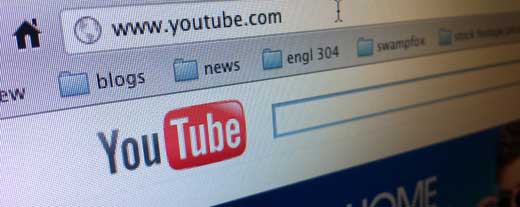It is so much fun and intriguing to watch all the rhetoric coming across all the social channels surrounding the “earthquake” on Tuesday. So many news outlets were competing for coverage, social channels were blown-up with updates from personal accounts…many organizations sharing information.
The one thing that fascinates me is how we share so much information as it is happening. We want to be a part of the conversation. We want to share our experiences in the same manner that news outlets provide coverage. This mass volume of information can be perceived as a competition…organizations want to share the coolest photos, the most interesting facts, news outlets bringing in experts to analyze, even false reporting with photos not accurately representing Tuesday’s events.
The exponential results of the social channel is tremendous. We have become our own news outlets, competing and sharing information just as fast (if not faster) than traditional outlets.
I spoke with Jodi Gersh from Gannett during SOBCON in Chicago this year, and she shared how they are re-evaluating how they share information across social channels. Traditional news outlets have wanted to confirm information before it was reported…but taking “Live” television or “Breaking News” reporting to the social channels is a new strategy.
I think back to when I was in broadcast television, “Breaking News” coverage was all about the pictures, just showing what is happening was more than sufficient to provide realtime coverage when stories are developing…the idea of “this is what is happening now.”
When you add the social channels into the mix, you are writing textual information and delivering to a mass audience. When it is written, it must be true. So a whole new strategy for media outlets is evolving, reporting on social channels is a game changer…typing the information and sharing it as it happens. Removing some of the confirmation elements, yet sharing “what we know.”
This is fun to watch…
I remember back when LA television stations were giving small video cameras to local people, shooting video of local events so that they could cover all their news basis. At the same time, embeds were emerging with small video cameras on political races. CBS, NBC, and other outlets were giving young journalists cameras and following many of the candidates on the campaign trail, just incase something happened…they could have video of the event. The CNN idea of the iReporter, giving young people a chance to provide coverage. This allows CNN to cover all their basis just incase something big happens.
Now…we are the social reporters. We are challenging the main stream news outlets with real time streams of information. The first hand accounts show up in Facebook streams, Twitter Streams, Flickr, YouTube, etc., etc., etc. We are creating media faster than the news outlets can report the main story. Conversations are shaping around these updates and before we know it…communities are growing and connecting.
Think back when the Haiti earthquake happened…it was a Twitter stream that provided much of the updates and even helped locate some people. I remember when I was on the ground at Katrina. We had no cell phone access. We could only use the satellite phones in the satellite trucks, but text messaging was the way we communicated…next to our two-way radios.
It is amazing how far we have come.
So I just received an invite and I working through Google Plus and checking it out. As I login, I have noticed a few things:
- It is just another social network, another place to interact with people online.
- As I am creating my profile, it is pulling a lot of my information from my Google Profile. So if you have an up-to-date Google Profile, it is going to populate your Google Plus profile based on this information.
- It is basing your network of connections from contacts in your Google Account. Google Plus uses the term “Circles” as a name for your networks, and can be based on how you set-up your Google Contacts.
- It has a stream similar to Facebook, allowing you to make an update and include a picture, video, link, or location.
- Reminds a bit like Google Wave as far as the interface design and fluid interactivity.
- I am thinking through the business application for enterprise level usage such as Facebook Pages.
- Wondering how and when I am going to use this social network and if it makes sense for me? I am active on Twitter for both personal and business, Facebook for both personal and business, LinkedIn for business…so wondering where this makes sense for me? If at all?
- The digital media interaction looks fluid, specifically people are posting animations and other interactive media with ease.
- Google Plus looks like another extension of my personal Google Account. Yes…it is pulling information from my Gmail, Contacts, YouTube, Picasa, and Profile Accounts from one single Google login.
- Since you have to have a Google profile to have a Google Plus account, a Google Business account cannot accept an invitation currently. Yes, BobbyRettew.com is self hosted and also uses Google products such as Mail from Google. So when I log into my BobbyRettew.com Google Account…I cannot create a Google Profile. Thus, the Google Plus invitation sent to my Bobby@BobbyRettew.com email account would allow me to accept the Google Plus invitation. My Google Plus account is via my BobbyRettew@gmail.com email/Google login.
So here ya go…my initial thoughts after playing with it for about 15 minutes. This is purely a surface level overview…nothing strategic yet. Still thinking through and wondering the if, how, and when about this social network. Bottomline…everyone is raving, but do I really give a dang about investing time in another place to interact with the same group of connections. Or…maybe this social network will open a whole new place for new relationships and new interactive experiences.
Bottomline…I think it is still another place for Google to try to make a play on Social Networking; leveraging all the other technologies that are already in place for an individual’s Google Account.
Take away for me (since I am a tech geek)…it is going to be fun for a while. But eventually it will have to bring value beyond the honeymoon for me to engage along with all the other social outlets.
So tomorrow…part two of three posts: “Google Plus: It is going to help your search results?”
Can you do it? Can you spend one week not looking at hits, clicks, followers, “Likes”, etc? Can you do it? Can you stop tracking for one week how many people from some geographic location clicked your blog post. Try it…it is liberating.
We have succumb to content creation based on metrics. Yes, all those tracking mechanism we pay for, install, monitor…any thing with numbers. Those numbers influence the content we create. Yes, if we see a post, an update, a spike…then we re-focus what we are creating to try to generate the same if not bigger spike.
How about this, spend a month not looking at these metrics and write, tweet, connect, “Like”, record content that is inspired from within and a community around you. Now some may argue that the community influences the content creation based on the metrics and numbers recorded. JUST SAY NO!!!! HELL NO!!! Lock that idea up for a few weeks.
Have you ever watched the show “Undercover Boss” where a companies’ leadership wears a disguise and immerses themselves inside their company. The purpose is to really see and hear what is truly happening inside the company. Many major company bosses do this to listen inside the community they lead. I like this idea.
What if we as content creators took this approach and immersed ourselves in the places where our inspiration drives our content. Not in the numbers, almost like and ethnographical study. Get away from the blogging, writing, video creation that is driven by metrics and immerse our creativity with the community were are seeking to connect. Listen and engage. Create content with them not for them. Hell, let them create the content for you.
We must challenge ourselves as marketers to step away from the metics and numbers and allow community inspiration drive our content creation and innovation.
I was working with a group the other day around topics for their blog and ways to tell passionate stories for the audiences. We were listing topic areas, stories, and putting a rough schedule together to build consistency in their writing. They were extremely focused on the schedule so much so that they were worried about breaking outside of that schedule of writing. I have a few points to make here that will yield to my thesis that writing passionately yields community writing.
I told them that this schedule was just merely a barometer, and when you find a compelling story to tell…sit and write. Share your story and share it often. I think about writing for my blog almost like the way I began dating my wife. When, I first met my wife in graduate school…I fell in love. I knew I was going to marry her. It just took me two years for her to agree. As we began dating, we would go out, talk on the phone, meet for coffee, and learn to get to know each other. I had the three day rule.
The three day rule meant that after we would go out, I would not bother her for three days. I did not want to encroach on her space. I valued her friendship and I wanted to get to know her. But, I did not want to push her away…I wanted her to want to enjoy our time together. I was passionate about our relationship. Overtime we grew closer and the three day rule slowly disappeared.
Writing passionately is sort of the same concept. I try to build a relationship with the people that read my blog. I may not be the best, but I try. I try not to write too much to overload the “Internet” space and the people that receive my blog via email and Google reader. My wife is my barometer with this rule. She has been writing for close to five years on her blog. She writes about the following topics: life after her mother (who died of breast cancer), fighting infertility, against cause marketing, and her family. She writes about these topics and she writes passionately. She writes when she is inspired. Sometimes she writes everyday, and sometimes she writes after a month off.
She has built a pretty good community of readers. She has attracted successful authors and other bloggers like herself to share in her mission. But here is the thing, she is now writing with them. What do I mean by that? She will write about a topic, people will comment, she will respond, she will read their blog posts and respond, then she will write another post sometimes based on how her community is writing or responding to her. She has built a conversation around her blog, a community of people that have common interests and passions. She gets regular emails from her readers.
How does she do this? Well, she has a focus for her blog and she shares with her community. She writes straight from the heart…when she feels led to write. There is no set schedule, there is no checklist…just a passion for her topics and for the people that respond in her community. She regularly is reading her friends blog and genuinely responding to their posts. She is building a community and this community’s writing is influencing each other in a way that they are writing for each other.
So here is my point. Writing for a blog has three elements: Focused Content, Passionate Writing, Engaging with Your Community. This is a barometer that I think will lead to a community of people that share your same interests.
Hootsuite being down this week proved something to me once again…we are just a bunch of freaking marketers. We are…and we want our coveted little Hootsuite to continue to be our traffic department. Yes…we freaked out when we could not schedule some tweets.
Where the heck is this thing going? First of all, I quit using Hootsuite about a year ago especially when they began the process of charging a monthly premium for there online services. Yes, they wanted me us to pay a monthly fee if you wanted to manage multiple accounts. I have always been a TweetDeck fan, but Hootsuite was a great solution, especially in the corporate world. WIth all the company owned laptops and desktops, IT departments have been restricting company users to download and install programs like TweetDeck. Hootsuite was perfect since everything was web based.
Now…I will admit that I did train people to understand how to use the scheduling option. I even schedule Tweets to go out on TweetDeck. But where have we gone…this social outlet is turning into a traffic outlet. For the past few weeks, I have reached out to people on Twitter and they normally respond. It took them a few days to say hello and some did not even reply. Why, they are freaking scheduling all of their tweets. The corporate marketing demon has possessed our souls.
We have succumb to this inner possession and the group think of this social web. We are scheduling our social-ness. No, I do not mean we have pulled out the calendar to schedule what party to show up to…we have scheduled what we say in the social space. We have become drones to our marketing outlets, sending out tweets, status updates, etc…
It is similar to going to a party, having a conversation, then stopping mid sentence until our brain can release the next sentence based on the schedule we set that morning. Can you imagine that. Remember Star Wars during the Battle for Naboo (Episode 1), all the sudden all the clones stopped fighting because someone pulled the plug. Well that is what happened when Amazon had trouble with their cloud computing services, causing Hootsuite to shut down. The clones quit tweeting. Yes…
Who am I to blame…it is a brave new world and the audience lie in social outlets. Corporate marketers have moved lots of their dollars into the social ranks, investing in promoted tweets and hashtags and other places to spread the branded message. But…oh; but…it is no longer social media. This same model holds true in reality television. You mean to tell me that Big Brother and the Bachelor is true reality television. It is not capturing reality, it is creating the reality “it” wants audiences to perceive. The same holds true in the social space…it is no longer the social space, pushing the line away from center.
I have noticed that many of the conversations I used to have on Twitter are now migrating to other spaces. I am seeing a shift away from spaces like Twitter for real engaged conversation. I have really locked down my Facebook page, only allowing certain people in that space. I am finding more and more conversations happening there. If I post a link that interests me…many of my online buddies are using those links as places to expand conversation into rich, thought provoking debate. This paradigm is allowing a conversation to flourish beyond the 140 characters.
Twitter has become the mass media beast with lots of noise to sift through. It has become the new age outlet for our PR & Marketing Engines to share our branded messages. Their is a shift beginning and it will be interesting to see where those, who are truly socialites, will co-exist and engage in social, online discourse.
I had a recent chat with a large philanthropic organization about their social media usage, successes, and challenges. They hired someone over a year ago to help manage their social strategy and now they were trying to measure success and justify positions and commitment. As we chatted, I was listening to their metric for success…it was centered around the number of dollars raised and how this “perceived” social awareness has driven individuals to give.
This conversation really had me thinking about ways we could re-tool and rethink the approach. They were using mainstream approached to social awareness with outlets like Twitter, Facebook…using these outlets to promote events and build connections. But the more and more I looked at what they were doing…I had no idea what their story was all about. I had to search and understand why I should “Follow” the conversations, why I should be a “Friend.” I was not even sure who I was talking to, a brand, a person, a large entity.
So I challenged them to start telling stories, case studies of how these philanthropic dollars help the individuals. I would not find stories of success in their digital space, stories that justify the dollars being spent on research The research that helps people. So…I started drawing!
Social Media does not raise the money. Social Media and online tools are just tools of credibility and connection. Yes…we can connect online and build virtual relationships, but giving hard earned money happens because of a relationships, some due diligence, and checking the facts. Checking the facts, the credibility piece, is where the Social Story is so important.
When I meet someone who is talking about giving to a foundation, an event, or idea…it is through a relationship. A real person. We meet, we chat, then I learn more about the cause. Afterwards, I go home and sit down and start searching online. I begin to read websites, get on chats, follow people on Twitter that share those interests. I begin to build online relationships as a part of this credibility search. This is where the social space is such a great tool, it is the PR/Marketing tool that puts information and people at the fingertips of those who are searching to make a decision.
Telling stories works and it works well. So how can we tell stories in the digital space so when people are searching for information, it is readily available? Well…it starts with the mothership. You have to have a mothership that is the digital home for all the stories. This is the place where all digital, web traffic will go for the audiences to enjoy. This mothership has to be dynamic, meaning it has to have recent information and continually updated.
In this situation, I would start three processes:
1) Start A Blog – The purpose here is to tell rich success stories in the organization. Write a new story once a week, one that touches the heart of the cause. Once a week, find a new success story and describe what makes it so special. Let it be passionate, let it be rich with ups and downs. Let the textual words of these stories grab at the hearts of the readers.
2) Video Record Stories – Use a flip camera, iPhone, some digital video device to capture tiny moments in time that show the life of the story. Is it the moment that a person has been cured of a disease, or did they get to go home from the hospital, did a child get a toy, something that visually represents emotion…the moment in time that grabs the emotion of the event. Put these stories on a YouTube channel, then embed them in the blog posts.
3) Take Lots Of Pictures – Use a digital camera to show pictures, images of the stories. Show happy and sad faces, struggles, excitement, emotion. Use visuals to paint the picture of the story. Put these images on a Flickr account and embed them in the blog.
All three of these things are centralized on the blog, showcasing passionate stories of the philanthropic organization. Spend months writing, recording, and capturing these stories. Each time you capture a new story, share it with your friends on your social outlets. Do more that just post links to the stories, but tell us why this story meant so much to you to share. You have to be just as passionate in your sharing as you are in your writing of the post.
Over time, you are building a library of stories, case-studies. These can begin to become focal points of your PR/Marketing exercises. Sharing the stories as campaigns. Imagine billboards, tv spots, brochures being created around these stories of success. All driving traffic back to the blog where people can read more. Imagine your PR campaign, sharing these stories with media outlets, enticing them to come write about the stories for their audiences. It all starts with stories and putting them in one spot. Build a library of stories over time.
I think many communication and social media practitioners are looking back over the last few years and making assessments. We are looking at success, failures, challenges, and where to continue on this path of social understanding. One of the things I have some to realize is that it takes time!
It does…it takes time. Working with major, large organizations…I have learned a lot. What have I learned, well…employing a social strategy takes time. One of the biggest selling points of using social strategies is the low cost for the technology and commitment to community building. Well…the investment is strategy and the human capital. Over the last two years, I have learned a lot. So here are a few lessons I have learned along the way, especially with large organizations.
Lesson #1 – It is more than Twitter and Facebook. It is more than just opening an account, seeking out followers, and trying to have a conversation. Opening an account is easy, but it begins with creating a plan. I look at this as writing a start-up business plan for an entrepreneurial company. It is creating a path that is a barometer, not a ruler. Especially in large organizations like hospitals & universities, there are so many silos. So they plan has to start small and build on successes. Test one area, find a good model and begin trying to execute in other areas of the organization.
Lesson #2 – It takes a commitment from leadership. It is more than getting the mid-level decision makers involved, you need top brass involved. They are the ones that not only support the message, but can also engage in the strategy. We found much success with building blogs for the C-Suite, allowing them to write passionately. When employees feel like they can access the top brass, they are willing to engage in social, online conversations.
Lesson #3 – It takes commitment to community. Reaching out to brand ambassadors has to happen beyond the marketing and pr departments. They are the ones who can guide the organization, but they must empower those inside the organization to use the technology as a way to connect with others. Go where the people are and allow the technology enable to connectivity. One the smartest things I heard was Clemson University started an advisory board for Social Media. This board met once a month and guided internal departments on best practices. Instead of micro-managing the community, they worked with them on graphical standards and allowed the community to naturally connect.
Lesson #4 – It requires a commitment from IT/IS/HR. Yes…many hospitals are struggling whether to allow employees inside the organization to be able to access social outlets. It is a productivity and bandwidth conversation, yet more and more employees can access social outlets using smart phones and tablets. Opening access empowers the community to connect within the walls of the organization. Working with IT/IS and HR is important to find ways to allow employees have access to social outlets and educate employes on best practices and social media guidelines for their jobs descriptions.
Lesson #5 – It takes commitment from Brand/Graphic Standards gatekeepers. Building graphics, avatars, and other elements for organizations social outlets takes a shift in thinking. It is more than protecting the brand, it is about how to take a brand and represent it in social outlets. When people see a company logo on a social outlet, what is the expectation of engagement? Also…thinking through how to take logos that do not resonate in 50×50 pixels takes lots of thought especially when considering traditional branding guidelines. Engaging these gatekeepers is key, bring their input to the table and educating all parties how to implement graphics across an organization. Take a look at large organizations with many departments. Maybe it makes sense for each to have multiple social accounts, how do you represent the brand yet differentiate between departments…it takes discussion, thought, and planning.
Lesson #6 – It requires engagement with your brand ambassadors including employees. This goes back to the IT/IS/HR discussion. Especially for large organizations, your employees can be your largest brand ambassador. If you restrict the technology that could connect these individuals, you may be restricting your greatest potential. Brains on Fire did something special with the Fiskateers, connecting them under a message and passion for scissors. They recognized an area with tremendous potential for community connection and engaged them using technology that made sense. Hats off to BOF!
Lesson #7 – It takes passion, passion for your mission and message. Social outlets are being used for “Push” marketing, pushing our messages on people. Well, is that an engaging conversation. It takes passion. The people that lead your social cause should be passionate about the cause, allowing the social technology to naturally connect them to others. Fan bases, followers want to connect with people they trust and who share a common passion. If those who are socially leading are not passionate, then it becomes noise in this big ole pond of digital discourse. Passionate writing, passionate tweeting, passionate video content, passionate message…passionate people connect with passionate people.
Lesson #8 – The message has to come from within…let the community empower the message. It does…outside advertising/pr/messaging firms should not tweet, update, blog, etc. for the organization. The message has to come from the people that believe in the message, that live inside the organization/community everyday. It is about people, stupid…and people want to connect with real people.
Lesson #9 – Their are so many more social outlets than the mainstream outlets. There are so many other social outlets out there than your typical Twitter, Facebook, YouTube, Quora, etc. My wife interacts on a social outlet called “The Bump.” A chat room for women who are expecting babies. She is connecting with tons of women all over, building relationships and sharing stories. How about Polyvore, my sister-in-law loves this social outlet for fashion trends. You have to go where the community is engaging, build relationships where the conversations are the best.
Lesson #10 – It does not happen overnight. It does not…it takes time, patience, a good plan, and commitment to building a strong, long-lasting community.
What the heck do I mean by this? Well…for many of us digital geeks out there, this might be a no-brainer. But…the world is changing in the Social Video space faster than someone can upload the next YouTube video.
If you want to compete in the viral, social marketing space…then just go ahead and give in to YouTube and Vimeo. Seriously…if you are self-hosting content or have vendors hosting video for you, then you are in a DARK DARK ROOM.
Over two years ago, I was pitching to clients to be skeptical of YouTube, Vimeo, and other free video hosting outlets. I was telling them that “they” own your content that is uploaded and you would have to worry about protecting your brand. Well…I was saying that because I was trying to sell video storage, compression, and distribution like I was the next big venture. GUESS WHAT…that game, that technology is just a commodity.
If you are a marketing department, you really need to know the following about your video content:
1) The ability to play your content over a wide range of devices from Windows, Macs, and Linux based desktops and laptops is necessary. You also need to be able to reach the real growing crowd…MOBILE DEVICES. With 4G here…we will be watching video content like we are drinking our favorite frosty beverage…GUZZLE, GUZZLE, GUZZLE. So…if someone cannot watch you latest marketing video because it is hosted using a Flash or WMV player…the you are marginalizing a large portion of your audience. HTML5 players are the next innovation for playback of your video content. Why do you think YouTube, Vimeo, Brightcove, Sorenson, and many others have implemented this technology.
2) The local production shop who is hosting your video DOES NOT have the SEO like YouTube and Vimeo can provide. Seriously, when you embed a video hosted on these two platforms…you are connecting some of the largest search engines to your page via the video content. When you upload the video to YouTube and Vimeo, you can provide a detailed description, tags, location where it was shot…and all of this follows the video when you embed it into your website. The local shop is not owned by a search engine, so they do not specialize in SEO. So if you are paying to host content on their private servers, then pay to have the final video released to you and upload it to your YouTube channel.
3) YouTube and Vimeo also come with a community. Yes, people are searching these sites for video content based on their interests and comment right below the video. So…the community is built around the content, engaging audiences beyond the website you have it embedded. The search engines like this!
4) The quality of the playback is great. You can look at HD quality video right over your home network. That is backed by huge teams of technology experts that make it their mission to make your picture quality look great. Why do you think Hollywood uses these outlets to release Trailers…hmm?
5) It is so CHEAP. YouTube is free and Vimeo is $60 per year. So why are you paying monthly fees for hosting when your marketing message cannot be viewed on some the latest mobile devices? I do not know, but you might want to reconsider.
This post is truely meant for viral marketing efforts for video. There is TREMENDOUS value in using private hosting and Flash video for private video messages. You not only can control the distribution, but you also force individuals to watch the content in specific types of technology. There is value in this model.
Thoughts…think I am crazy? There are some business that would like to scream at me…but oh well. Why am I writing about this…because large organizations are still operating in yesterday’s thinking.
If you think back to 2008, well many of us do not want to go back in time. It is October 2008 and in one single week, we witnessed a financial fallout of epic proportions. I remember sitting in the office of a business we just started; our fresh new furniture, big ole office, watching on the 52 inch HDTV as the market crashed. I knew right then and there, we were in trouble.
At that same time, we were in the upswing of one of the biggest online movements we have witnessed since the web was WWW. Yes, the Social Media Revolution. Twitter was growing faster and faster…here is a video in June 2008 of CEO/Founder Jack Dorsey presenting the idea of Twitter and actually beginning his talk by explaining Twitter as an idea.
Now most of you know that Twitter is not the only outlet that has defined this Social Media Revolution…but while Twitter was ramping up, gaining users…Facebook was growing just as fast. YouTube was growing and getting ready to become the second largest search engine behind Google.com. So how did all of this happen, well I have a few theories…and it is this premise that I think has totally shaped how Social Media influences marketing efforts today.
It comes down to jobs. Yes…jobs. It also comes down to community based innovation. As the stock market crashed, millions of American’s lost jobs. Businesses closed their doors. More American’s began using online resources to connect with friends, look for jobs, become entrepreneurs, and connect with opportunities. The job market was bleak so many groups around America began having social events, finding ways to connect and leverage relationships in the search for work. So we began seeing more and more groups created…and Twitter, Facebook, and other Social Media outlets were the connectors of these networks.
These groups were teaching each other how to connect with others, using technology to connect; building new spheres of influence, and generating innovative ideas. These social media connectors were “new” and fresh. The numbers on these networks began to shoot up, more and more people were using these networks and learning the in’s and out’s of how to leverage them.
At the same time, big box businesses were suffering. If you remember…there was a huge scare around Christmas shopping. Were people going to shop for gifts in 2008. I remember we bought most of our gifts that year using American Express points. No one could afford to buy cars, buy houses, buy gifts, etc…so big box companies were struggling with ways to connect with the consumer with their brand, then turn it into dollars. At the same time, Social Outlets were growing in numbers and they became a hot bed for consumers…a place to “hang out.” This is the critical point where those who were looking for new income streams began to realize…they could market how to use these Social Media outlets to big box businesses. Social Media entrepreneurs were being born left and right. They understood the consumer and how the consumer used these Social Outlets.
As the market began to recover, business began to recover with more dollars to spend. These dollars could be spent with people that understood these social communities and the technology that supported these same communities. Big and small business were being formed with the sole purpose of helping organizations use Social Media outlets. We began seeing more people speak at big conferences about these outlets, and small civic groups were entertained by local advocates for this community and technology.
Now as we fast forward to 2011, the market is flooded with individuals, plans, strategies, and businesses that implement social media strategies for companies. The numbers have grown so much with this big shift with more online engagement of social exchange. Now in 2011, there are social outlets that measure other social outlets, measuring the influence of individuals and communities. This velocity has completely shifted the way many organizations market their goods and services.
This Social Media Revolution created a culture, a series of communities, that now command the perception of brands. So why should we care? It is this culture, the Social Media entrepreneurs that are now influencing how many people are doing business. It is shaping the way we broadcast news and information. Everyday, someone else wants to figure out how to measure the success of a community in dollars in cents. But we have to think back…how did all this happen. How the hell did Twitter, Facebook, YouTube begin to shape the way we communicate?
Some of the best and brightest innovation comes from a time of economic recession. I am not a Rhodes Scholar…but I think it because people are forced to find ways to generate revenue to support life, and they have time on their hands to generate these ideas. This time leads to new market ideas that leads to new innovation. This culture was a community of innovation that is shaping the way we communicate and do business today.
What are your thoughts? Am I totally off base?


